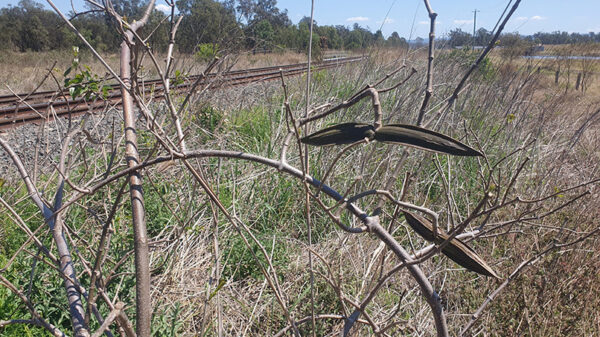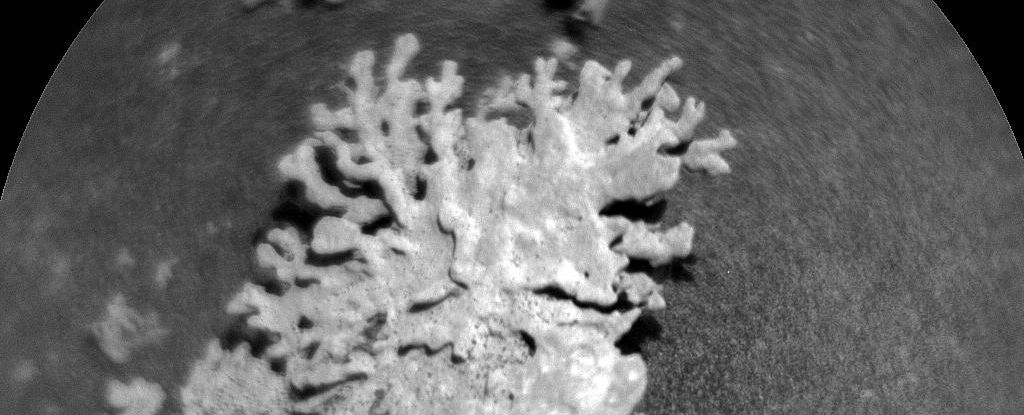The Curiosity Rover has made an intriguing discovery in the Gale Crater on Mars, unveiling a small rock formation that bears a striking resemblance to branch corals found in Earth’s oceans. Measuring only a few centimeters across, this unique structure also evokes images of fulgurite, which forms when lightning strikes sand or soil, fusing minerals in the intense heat. While Mars lacks surface oceans and does not host fulgurite, the formation showcases the fascinating ways in which similar patterns can emerge across different environments in the universe.
The rock’s creation can be traced back to a time when Mars had a wetter climate. Water that seeped through cracks in the Martian bedrock carried dissolved minerals. As the water drained away, these minerals were deposited and eventually solidified, taking the shape of the cracks they filled. Although the planet no longer has surface water, it is characterized by its relentless dust and powerful winds. Sandstorms can envelop Mars for extended periods, dramatically altering its landscape through erosion.
Understanding Mars’ Erosive Forces
The unique formation’s coral-like appearance results from the way different minerals respond to the abrasive force of Martian sand. In this instance, the surrounding matrix that held the sedimentary material was eroded away by the sand, leaving behind the more resilient material that filled the crack. This process highlights the dynamic nature of the Martian environment, where formations can evolve dramatically over time.
Curiosity has previously encountered a variety of unusual rock formations, including spindly spires and structures reminiscent of flowers. Other intriguing finds include a bubbly rock resembling frogspawn and one that appears to depict a shrunken face. Each discovery contributes to our understanding of the geological history of Mars, raising questions about the planet’s past environments and the potential for life.
The existence of such formations not only piques scientific interest but also evokes a sense of wonder about the potential for exploration and discovery on the Red Planet. As researchers continue to analyze these findings, they paint a richer picture of Mars’ geological past and its evolutionary trajectory.
As the Curiosity Rover continues its mission, it serves as a reminder of the complexities of planetary science and the exciting possibilities that await future missions. The discoveries made in Gale Crater and beyond encourage both scientific inquiry and public fascination with the mysteries of our neighboring planet.





























































